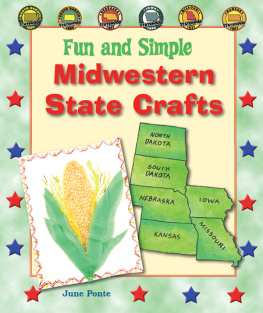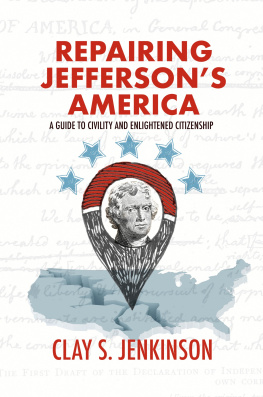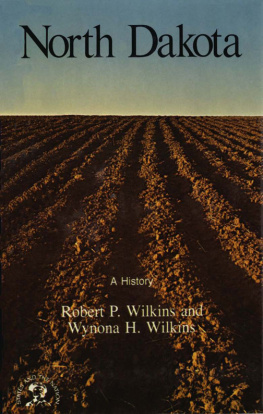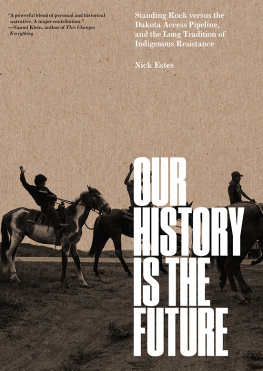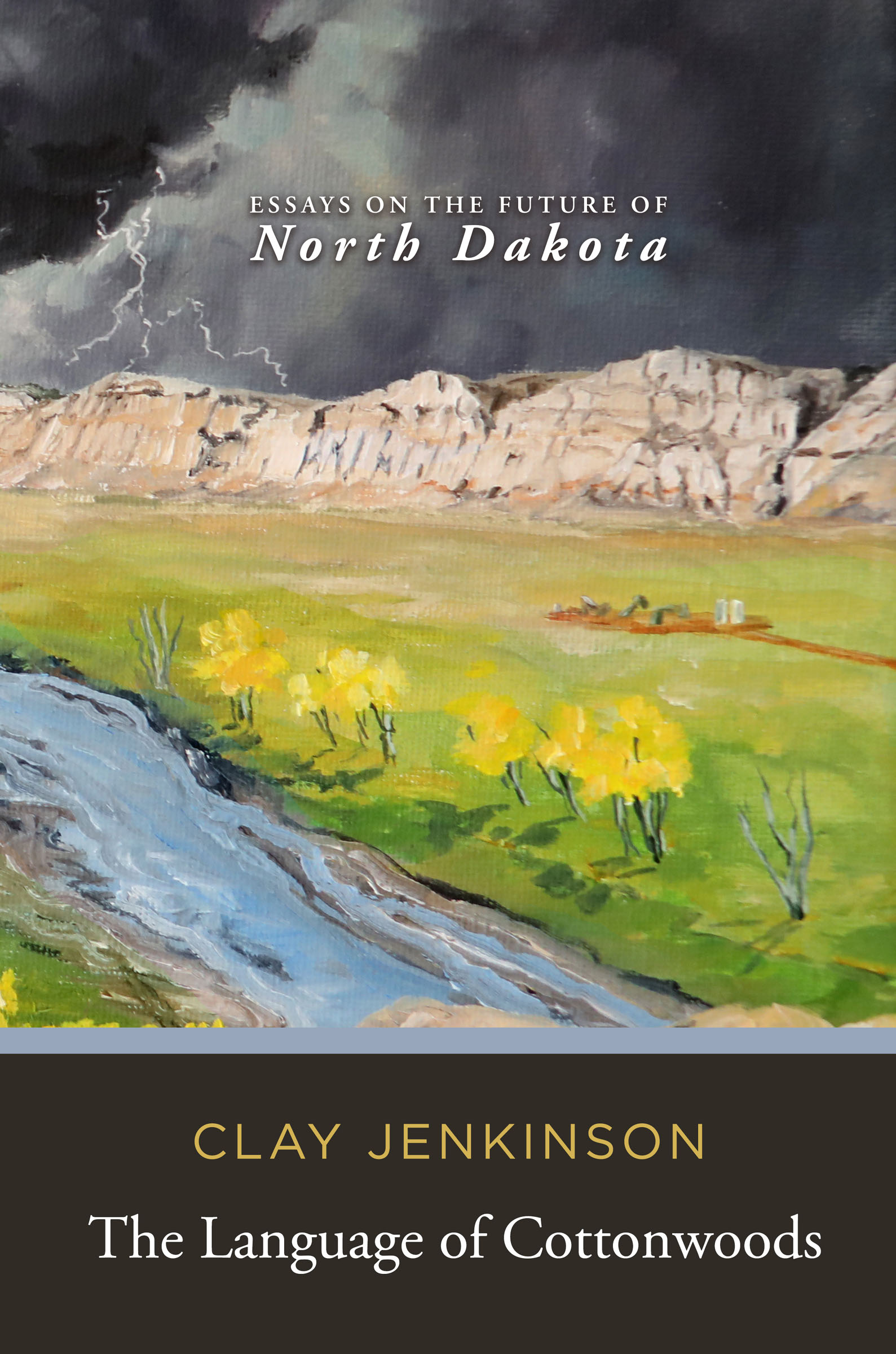The Language of Cottonwoods
Essays on the Future of North Dakota
By Clay Jenkinson
Copyright 2021 Clay Jenkinson
ISBN 978-1-64663-100-1
All rights reserved. No part of this publication may be reproduced, stored in a retrieval system, or transmitted in any form or by any meanselectronic, mechanical, photocopy, recording, or any otherexcept for brief quotations in printed reviews, without the prior written permission of the author.
Cover painting used with permission by Katrina Case.
Maps and illustrations by Joanna Walitalo.
Photographs by Clay Jenkinson.
Cover design by Skyler Kratofil.
Published by

3705 Shore Drive
Virginia Beach, VA 23455
8004354811
www.koehlerbooks.com
Also by Clay Jenkinson
Message on the Wind: A Spiritual Odyssey on the Northern Plains
A Vast and Open Plain: The Writings of the Lewis and Clark Expedition in North Dakota
The Character of Meriwether Lewis: Explorer in the Wilderness
A Free and Hardy Life: Theodore Roosevelts Sojourn in the American West
For the Love of North Dakota: Sundays with Clay in the Bismarck Tribune
Repairing Jeffersons America: A Guide to Civility and Enlightened Citizenship
Theodore Roosevelt: Naturalist in the Arena (with Char Miller)
Donald Trump and the Death of American Integrity: An Autopsy and a Path Forward
Bring Out Your Dead: The Literature and History of Epidemics
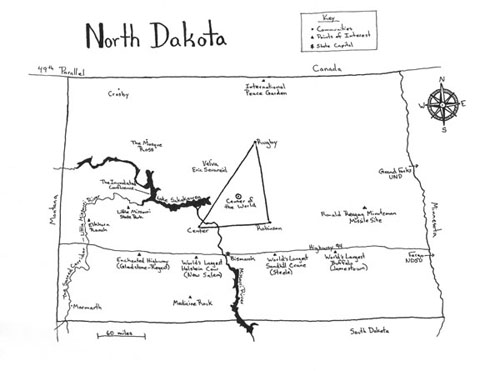
The Language of
Cottonwoods
Essays on the Future of
North Dakota
Clay Jenkinson

For Catherine Missouri Walker Jenkinson
Who Lived It
Foreword
C lay Jenkinson is a public intellectual. He thinks deeply about issues and shares his conclusions widely. In this book he turns his attentionnot for the first timeto North Dakota, the state that nurtured him and to which he returned after study at distinguished universities, including Oxford, and teaching, writing and creative work in other places. The enormous emptiness of North Dakota drew him home, and he began to explore anew the states grasp on its people, all of its peoplelovers of its wilderness, tillers of its soil, drillers for its oil, newcomers, descendants of homesteaders, indigenous people. He turned, too, to the eccentricities of its politics. Nor did he overlook the extremes of the states climate, the panorama of its landscape, the voice of its cottonwood treesthe species that surely should be the states arboreal emblem, but which North Dakotans overlooked in favor of a more stately, less rangy, and less well-adapted species, the American elm. The choice is in some ways typical of North Dakotans. We have never quite gotten things right, although weve been fighting about them for a long time.
The truth about North Dakota is that it attracts attention from outside its borders only in extreme times, like during the extraordinary uprising that produced the Nonpartisan League, the closest any state has ever come to a government of democratic socialists. Democratic Socialists created the nations only state-owned bank, an institution to which the states current residents (and especially its politicians) pay daily homage, since it has helped balance the states budgets, educate its children, expand its farms, build its small towns and mine its resourcesin other words, to make the state economically successful, even in the wake of the wreckage of the Great Depression, which struck North Dakota more brutally than almost any other state, causing a dramatic decline in population that took seven decades to overcome. Today, North Dakota gets attention for the stupendous richness of its oil fields and for the rightward lurch of its politics. Less than a decade ago, all members of North Dakotas congressional delegation were Democrats, all three of them. Today not a single Democrat occupies any statewide or federal office. Not one. And the party has been reduced to a remnant in the state legislature. Only one other state gave Donald Trump a larger victory margin than North Dakota.
Jenkinson seeks the soul of his homeland in this book.
It has been a lifelong search for him, and I am extremely proud to have helped set him on this journey. I met young Jenkinson when he was a student at Dickinson High School in one of North Dakotas few real cities, population 7,000, sometimes more, sometimes less, depending on the price of oil mostly, because even then the wide-open, sunbaked and windswept southwestern corner of the state relied on oil for whatever comforts could be created. It was a modest boom and an uncertain one, but it brought open-minded and eager people to the town, including a newspaper editor whod worked overseas, editing Stars and Stripes , and an oil promoter who settled down as circulation director of The Dickinson Press . And it brought me, a freshly minted cub reporter. Jenkinson latched on to the Press . He was a junior in high school who owned a camera. He got the photographer job at the Press , he teases me, because I couldnt take pictures.
Those were great days in a great country. Southwestern North Dakota was under-covered. Reporters from bigger papers showed up once in a while, from Bismarck or far-off Fargo, less often from Billings, Montana, or Minneapolis, Minnesota. Once a reporter from New York City passed through. Unbelievable. Otherwise, we had the territory to ourselves, and we set out to discover all that it had in it, the raw and the cooked.
Jenkinson renewed his search when he returned to the state, and he brought an assortment of entrepreneurial ideas. In effect, he monetized his breadth of knowledge in the humanities, creating The Thomas Jefferson Hour , in which he portrayed The Founder addressing fundamental issues of his time and our own. To this he added a kind of travel agency which organized trips to explore all sorts of places: Paris, Rome, Greece, the Panama Canal, Californias Central Valley. He became an important scholar of the Lewis and Clark Expedition of Discovery, of Robert Oppenheimer, of John Steinbeck (the California connection). He established the Theodore Roosevelt Center at Dickinson State University in his hometown.
This is his thirteenth book.
Dig in. Enjoy.
It is an important book about an important place, a deep look into the workings of one of the fifty states, at once a look of concern, bewilderment and wonder, a loving look and a critical one that illuminates the quirkiness of the pride that North Dakotans have in the place and in themselves. For an example, read about the competition for bragging rights as the Geographical Center of North America.
Mike Jacobs
Gilby, North Dakota
Preface
I f you are not a North Dakotan, please read this book anyway. It is about a very interesting place, and it could just as well have been written about almost anywhere on the Great Plains. At the very least, it has ramifications for the entire region and, to a certain extent, for all of rural America. There are more uncool places in America than cool. Even states like California and Colorado have their North Dakotasthink of Fresno and Visalia (California), and of Limon and Lamar (Colorado).




